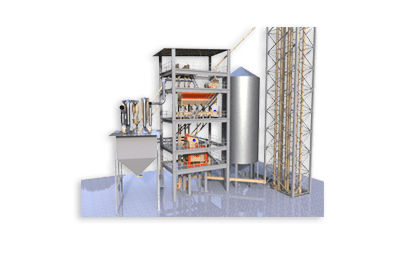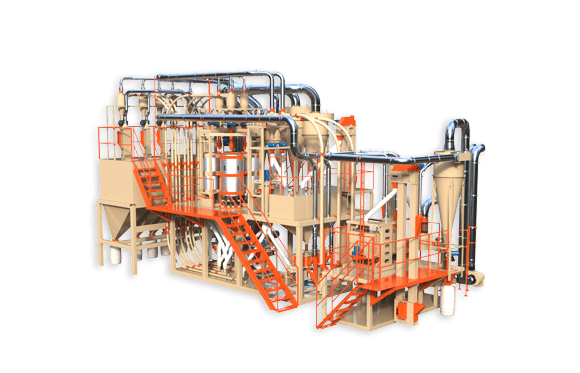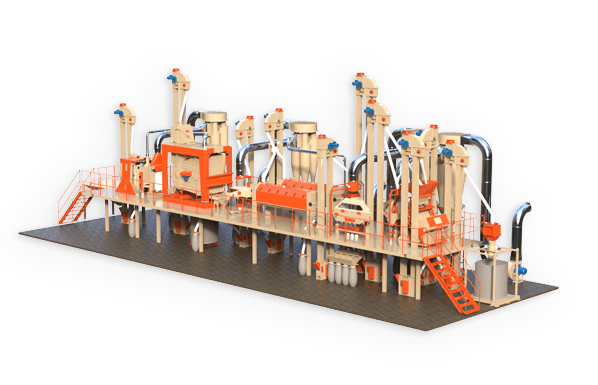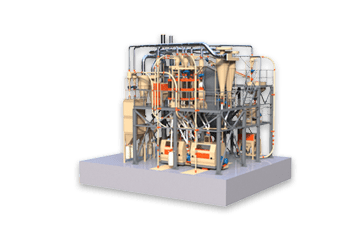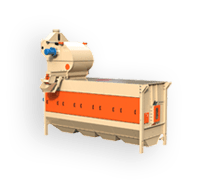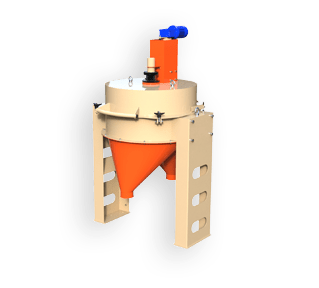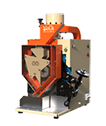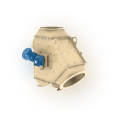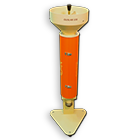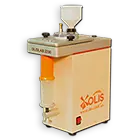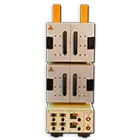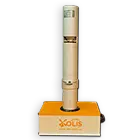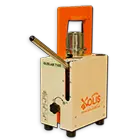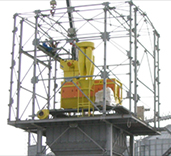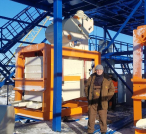Surface treatment of grain mills
Ltd “Olis”
Vereshchynsky A.P., Ph.D., Kroshko A.V. engineer
«Grain storage and processing» – № 5, 2005.
As you know, in the training of grain breakage is traditionally used hulling machine. Their task is to clean the surface of grains of sticky dust, sand and microorganisms, removal of the upper torn amniotic membrane, as well as the removal of beards and partial embryo. Evaluate the efficiency of hulling machines to reduce the ash content of grain as a result of treatment. Hulling machine is called effective if they work reduces the ash content of grain by not less than 0.03%, while the increment of the number of broken grains is less than 1%. Considered to be: if the total reduction in ash content of grain after the grain-cleaning of all operations in the range 0.07 – 0.011%, the cleaning in general performed efficiently. Given that the traditional patterns of grain-cleaning in mills contain two sequentially mounted hulling machine, we can conclude that the effectiveness of these machines depends essentially the result of the overall grain-cleaning.
A survey carried out by us in mills with different grain-cleaning schemes, traditionally used design hulling machines do not provide the degree of efficiency, which is installed in this machine type. Thus, in the hulling machines such as the rare-earth BGO as a sieve, and abrasive cylinders, reducing the ash content of grain from one approach does not exceed 0,015%, while the number of particles separated from the grain is in the range 0,1 – 0,2% of the original grain mass. In the machines of the type of RE IBO degree of efficiency is somewhat lower. Even lower efficiency of hulling machines that come packaged mills. Repeated passage of grain through the same machine, usually accompanied by a further reduction in ash content of grain and the separation of its mass, which gives grounds to regard the processing of both imperfect. Attempts to increase the intensity of treatment by changing the peripheral speed of the rotor or the gap between the whips and the cylinder always lead to a substantial increase in the number of broken grains, especially in machines with abrasive cylinder. Besides, in this case, setting the machine should be carried out at each change of Vitreous and humidity of the processed grain. Possibility of such an adjustment without stopping the machine is not available. Increase time and intensity of treatment by increasing the load of the working volume of the machine creates the conditions for its emergency operation, which is accompanied by a sharp increase in energy consumption, inadequate observable effect. These drawbacks are a certain way of processing the existing hulling machines, where much of the drive energy is expended on the impact of forced, indirectly associated with cleaning the grain surface. To those include multiple shock deformation of the grains, their mutual friction and friction with the working bodies, mixing, moving, etc.
Low efficiency of hulling machines the most negative impact on the work of the mills with the “short” circuits fault. In such schemes, because of the very short grinding line, a small number of systems and lack of enrichment processes, excluded the possibility of reducing the impact of pollution on the quality of grain flour. As a consequence, the impurity aimed to break the surface of the grain is almost completely fall into the flour, decreasing its quality. The problem is exacerbated by the fact that these mills are generally lacking stoneselectors and Trier, a sieve, and air separators, often represented by inefficient designs. Thus, the flour does not just impurities attached to the surface, but also part of the remaining impurities as a result of inadequate cleaning of grain as a whole.
Modern millers need a machine that could pass for a maximum clean the surface of grain, but if and only if, it is desirable that this machine is to remove the effect of other related impurities. Such a machine should be managed in the operating mode of performance indicators, provide the necessary range of fluctuations in performance and high power consumption.
In our opinion, which confirms the correctness of the practice, the most reliable way to clean the surface of the grain is to remove the dirt along with the top cover of the grain. Analysis of structures traditionally used hulling, grinding and hulling machines, as well as to study the features implemented in these processes have allowed us to identify design principles machines that would satisfy the above requirements. Particular attention was paid to the features associated with ensuring uniformity of treatment of the grains. The result was a machine, compiled by type of horizontal hulling machines with sieve cylinder, a rotor which is equipped with whips a special form, as well as abrasive. The intensity of treatment in such a machine is defined by a peripheral speed of the rotor, the number and order of installation of pests and discs. Thus, in the machine design is the possibility of pre-install the required ratio of the impact shock and abrasion. Function of operational tuning mode of the machine on the move provides a special device issue, because commonly used for this purpose cargo valves are not reliable enough and small functional. Aspiration regimes provide air flow into the work zone, followed by selection with the separation of particles and transportation shall be calculated separately aspiration system.
Approbation of the machine allowed to establish the dependence of ash z processed grain and waste from the number of deleted product k (Fig. 1). In addition, the amount consumed was determined with the electric power to reduce speed and increase the number of broken grains. Moderately low circular velocity of work provides a “soft” impact on grain, so increasing the number of broken grains in the range of glassiness 40 – 70% humidity and 13 – 15% is practically not observed. However, much damage and getting into the forage grain pests. The degree of reduction is proportional to the intensity of Dirt processing and depends on the nature of impurities. The seeds of some wild plants are removed by destroying it. Number of impurities in the processing gain less speed wandering (eg, wild oats fluff shell) and become separate aerodynamic means. Energy consumption per unit mass of the removed product is 100 – 130 W / kg and depends, mainly on Vitreous and grain moisture.
As regarded treatment in most cases preceded by conditioning the grain, then the obvious high degree of its influence on the processes of wetting behavior. As a criterion to determine the effect of surface treatment on the wetting of the chosen bulk density of grain. It is known that the surface condition and grain moisture content are related to the bulk of its mass (in kind). Nature, in particular, by the density of packing, which in turn depends on the condition of the grain surface. Surface treatment of grain with the office about 1% of its mass is accompanied by an increase in kind of 15 – 20 grams per liter. However, as shown by our study, a deeper treatment practically does not cause further growth of this parameter. One can argue that different degrees of grain handling characteristic is approximately the same state of its surface. After wetting the grain of his nature is significantly reduced, due to the influence of surface moisture on the density of stacking. As the soaking wet grain moisture content of its surface decreases, which is accompanied by growth of nature. We can assume that each value of the moisture content is uniformly distributed in each grain corresponds to a strictly defined value of nature. Thus, according to the dynamic nature of moistened grain can estimate the rate of absorption of moisture, depending on the degree of surface treatment.
As can be seen from the view, the rate of absorption of moisture in grain, whose surface is treated with significantly higher than non-processed grain and is approximately equal for samples with varying degrees of processing. The value of nature, corresponding to grain moisture at a uniform distribution of the added moisture is designated on the schedule A. The higher the degree of processing and the percentage of added water, the stronger the effect is manifested.
The degree of injury to the nuclei in the grain mass is determined to reduce the germination of seeds at different intensities of treatment. It should be noted that the number of separates in a car weighing up to 5% germination of seeds is reduced by no more than 3%. Thus, the trauma of embryos, entailing the loss of viability of seeds is very low. Production testing has shown that the most rational mode of operation of the machine, installed before the first stage of conditioning, is the mode with the office of the mass of grains within 1,5 – 2% These modes provide a reduction in ash content of grain at 0.05 -0.08% and Dirt 30 – 40%, do not break the processability in the performance of subsequent operations do not lead to increased energy costs in the development of flour. In the case of high initial ash content or Dirt grain processing rate can be increased to obtain the desired results, that serves as an essential lever for further effect on the efficiency of grinding in general. Production testing has shown that the operation of the machine in the “short” schemes mills leads to an increase in flour yield higher grades on average 3 – 5% increases in the whiteness and presentation. In addition, stability is ensured by the quality of flour mills have reduced susceptibility of grain quality.
Specifications of machine:
Productivity, kg / h up to ….. 3000
Installed drive power kW ….. 5,5
Air consumption, m3 / h. …. 425
Aerodynamic drag, Pa ….. 350
Dimensions, mm
Length …… 1144
Width ….. 403
Height ….. 1330
Weight, kg … 350


